On Nov. 15, 1986, rap music changed forever as the Beastie Boys’ released their landmark debut album License to Ill. It dropped on during one of the most pivotal years in Hip Hop, especially New York’s rap scene. From the onset of the record’s initial sledgehammering bass drum sample of Led Zepellin’s “When the Levee Breaks,” and similar to the imagery of its iconic album cover, the unexpected success of the album and catapulted rap music and Hip Hop culture to crash its way into the firmament of pop culture with no point of return to be deemed as a fleeting youthful fad. It became the first rap album to top the Billboard Top 200 album chart, and is now one of the few diamond-selling rap albums that the genre has ever produced.
Many Hip Hop fans became initially acculturated in Hip Hop through these three caucasian Jewish hardcore punk rock musicians-turned-MCs King Ad-Rock, Mike D, and the late great MCA. The Beastie Boys had an uncanny ability to amalgamate low-brow locker room sarcasm, high-quality sample production with help from Rick Rubin’s masterful arrangement techniques, and skillfully efficient rhyme routines with their loud, nasal New York accents. Thiry years later, it’s fair to say the original meaning for their “Beastie” acronym Boys Entering Anarchic States Towards Internal Excellence was an ambitious mission accomplished during the mid-1980s when world politics was leaning towards the right, and America’s embrace of a Bonfire of the Vanities-like culture needed a huge kick in the ass to listen to disenfranchised, urban, musical youth. License to Ill forced the adult contemporary-focused music community to go left. Although, the success of the Beastie Boys mission came at a high price that many within and outside their woven web couldn’t figure out how to redeem their own personal qualities to keep their own eventual legendary careers that could have went awry.
This is an overview of the Beastie Boys classic debut that put them in Hip Hop’s pantheon forever. The commentary from legends including New York rap radio luminary Kool DJ Red Alert, Hip Hop impresario Russell Simmons, Rock and Rock Hall of Famer DMC and Chuck D, the Beastie Boys third sound provider in the group’s history DJ Hurricane (their first was Rick Rubin, second was Dr. Dre from former Def Jam-signed group Original Concept and eventual host of Yo! MTV Raps), MCA Day annual memorial event founder Mike Kearney, and the HipHopDX staff reflects on one of the greatest albums in music history.
How Beastie Boys Got Taken Seriously As Rap Artists
Russell Simmons (Co-founder and former chairman of Def Jam Records): For the anticipation [of License to Ill], you see, I remixed “Rock Hard,” and kind of fucked it up. I put big drums on it from the records that Yauch had made with those big drums, which I loved. I put them in “Rock Hard,” and I really fucked it for all I know. But I expected an alternative record that was from a roundabout fun and alternative ban that I would appreciate was simultaneously part of those three guys. And also, Beastie Boys loved Hip Hop, and they had their own brand of Hip Hop. When they went by themselves and made “Hold It Now, Hit It,” my expectations changed. I think Ad-Rock had produced that record, they showed me another part of their DNA that was not being exposed. So hearing “She’s Crafty,” “Slow Ride” all those special records, those are the records that inspired me to the most. “Fight for Your Right to Party” was a fun record they made, kind of a joke. They didn’t even perform it live for a long time.
Kool DJ Red Alert (NYC Hip Hop Radio Icon): The first time I got to hear about the Beastie Boys, I was hanging out in a club in midtown Manhattan, New York City at a club called Danceteria. I got to hear the sound being played in the club, and I was like, “What the hell is this sound?” And then later on as I got with Afrika Islam over at the Zulu Beats [radio show], he was playing that same sound I was hearing at Danceteria. The name of that sound was called “Cookie Puss.” I’m like, “What the hell is this?” I was told it was by the Beastie Boys. I also found out that they also were in association with Rick Rubin, who was in association with my cousin, the original DJ Jazzy Jay, to form Def Jam Recordings. So it was that between Rick and Jazzy who had done some recording based on my cousin himself along with T La Rock, and other different artists, I guess the Beastie Boy were waiting their turn later on because what I heard at the time and what I heard later on, I started wondering, “Are these the same guys?” And this was when I was in the the club called Union Square. So started hearing this record coming into the radio station and then going into the clubs, a record called “Hold It Now, Hit It,” I said, “Yo, these are the same guys,” and I liked what I heard, and I went right on it. The downtown scene had a lot of punk rock-meets-Hip Hop. So you had everybody all in the message together. I acknowledged that Beastie Boys are amongst a punk rock vibe, but they were open to Hip Hop and learned how to combine what they’re accustomed to and we’re accustomed to as far as this Hip Hop sound is concerned.
#1 Stunnas: Boosted by “Fight For Your Right,” License to Ill became the first rap album to top the Billboard 200.
DJ Hurricane (former Beastie Boys DJ): On the [Run DMC] Raising Hell Tour in 1986, somewhere in the middle of the tour, Dr. Dre decided that’s not what he wanted to do, and wanted to pursue other things, I believe, and [those guys] were stuck with no DJ. So they found out through people like Russell, Jay, Run and D that I knew how to DJ as well as rap. They said, “Talk to Hurricane.” He may be able to help you out. So there was a gig the next day in the West Coast, I think it was in Arizona or something like that. I can’t remember the exact city. The guys came into the dressing room and asked me to do it for them because they didn’t have anybody to do it. So I decided, “Cool.” It wasn’t a job that anybody wanted at the time because they were brand new and they only had two records. It wasn’t like something that people were knocking on the door to do. So I did it for the rest of the Raising Hell Tour, and later that year License to Ill came out, and I continued to do it.
Russell Simmons: They showed us that their brand of Hip Hop was more interesting to the core Hip Hop fans than I thought. It was for people who loved Hip Hop, but for alternative and a big part of the critics and the support for Hip Hop that was coming out of the punk clubs, Chester Lounge, Danceteria, and all these alternative downtown clubs. The Beastie Boys had created their brand of Hip Hop. But then the bridge between their brand and the core for what we understood was the best of both worlds. When I saw it, I understood it.
DJ Hurricane: As far recording the album, I had nothing to do with it at all basically. The closest thing that I had to recording anything on it was “Slow and Low” that Run DMC wrote. In “Slow and Low” there was a small little rap in there I used to say when I was young, “A bun to the burger, a burger to the bun.” That was the closest that I came to contributing to License To Ill. But as far as doing the License To Ill Tour, I was big influence on helping the record grow by DJing for them. During the License To Ill Tour, they went from the opening band to the headliners. They had people coming to see them, not just see other groups. They were coming to see the Beastie Boys. Once I saw that, I said “Okay, these guys have crossed over now.”
The License To Ill Album Cover & Dodging An Album Title Bullet
Russell Simmons: I was glad it wasn’t called Don’t Be a Faggot. I didn’t care about American Airlines [Editor’s Note: Def Jam’s then-parent company was CBS Records, and the album cover had reportedly angered one of the CBS conglomerate’s top executives because American Airlines was one of the company’s biggest advertisers at the time of the album’s release]. I was more concerned with the controversy that it could’ve caused if [it] was called that. They elected to not call it Don’t Be a Faggot. They had t-shirts and everything. We loved the title License to Ill, but we just disliked Don’t Be a Faggot because we knew the shit we were going to have to go through if we they had actually named it that. License to Ill was the greatest title that we ever had at Def Jam.
DMC (One half of rap icons Run-DMC): Their License to Ill cover was way cooler than my Raising Hell cover (I hate the stupid look in my face). So I was quietly jealous. One of the best covers in the universe of album cover art!
How The Beastie Boys’ Skin Color Helped Hip Hop’s Success
DMC: Thirty years ago when I first met, worked with and toured with The Beastie Boys, I was captivated, educated and totally psyched up on what they were doing. They may not know this, but they taught me a lot! Our one common power spot was, and is, our love for the pre-record making era of Hip Hop. The live cassette tape era, from which we both took notes from.
Crossing Under: The Beasties convincingly took on Soul Train in 1987.
Russell Simmons: I wasn’t involved in the everyday discussions of what they were doing for the album. I mean, I heard stuff but I heard a tighter, better understanding of what KRS [One} might want. And he thought they were kinda of like an Elvis before they even got hot ultimately. He accused me of exploiting or putting Hip Hop at risk. But for a moment you think of when they got played on MTV and when Run-DMC did, they were hated as much as they were liked. There were two ways to look at it: Artists like the Beastie Boys helped open doors that a lot of the black artists couldn’t get in. So a record like [Run-DMC’s] “Mary, Mary” couldn’t get on the radio or couldn’t get on MTV like it should have. MTV should have driven that. I still look back and think that “Mary, Mary” should have been an alternative, fun Hip Hop record and it was. You can’t deny that. But the Beastie Boys could’ve put a record like “Mary, Mary” out and it would’ve gotten more play. So race did play a roll, and it’s understandable and had to let KRS know that at the same time I’ve always opened doors for alternative music and integrated fans. But it has always worked out 100 percent better for black artists. The Beastie Boys’ tour with Run-DMC helped Run-DMC sell a lot more records, and their success helped Run-DMC become more successful. But with “Fight For Your Right To Party,” there were people who didn’t know what the fuck rap was, but before you know it, they were playing “Hold It Now, Hit It,” too. If it wasn’t for that, there wouldn’t have been a lot of fans if it wasn’t for the Beastie Boys. It wouldn’t have even introduced it.
Chuck D (Frontman of legendary rap group Public Enemy): The Beastie Boys did Jackie Robinson-ish penetration in the name of rap across the USA, thanks to Run-DMC and Jam Master Jay. The 1980s wasn’t easy on black music at all much less Hip Hop. Groups like Public Enemy benefitted off those roads. License to Ill was the formula record because the Beasties never pretended to be anyone else but their New York selves, and that was the pass sold that sold the USA.
Kool DJ Red Alert: To tell you the truth, I never acknowledged the color scheme. All I acknowledged was the music. I’m a person that’s not judgemental on a gender, creed, nationality or things like that. To me it’s about what the sound is about. I don’t care who you are or where you’re from— it’s what you sound like. When I heard “Hold It Now, Hit It,” I thought it was good for the club Union Square and that it was good for me to play on the radio. And then right behind that, I took to “Paul Revere” as for most of my audience. I said, “These guys are onto something.” But I also liked “Brass Monkey,” and “She’s Crafty” for me to play in the clubs.
DJ Hurricane: I did encounter some racism on the road being with them, but not from them. Like, say, we would go to a gig and I would get off the bus and go to the side door for soundcheck and would get stopped by security who asked, “Who are you with?” And I’m like, “Yo, I’m the Beastie Boys’ DJ,” and I had to go explaining everything before I actually got in because the Beastie Boys are white and they had no idea who I was. So, you know, I was definitely singled out at certain venues and stuff like that. But I wasn’t having it back then because you could’ve gotten fucking beat up. I was very aggressive (Laughs). I was pretty good with protecting myself, and I was protecting those guys. I was like the DJ-slash-bodyguard for sure. I would protect them more than they’d protect me. My last name is Fite, so fighting is something I knew how to do, and back then I was younger so I had a hothead. If you compare me now and see how calm I am, you wouldn’t believe [that dude] even existed back then.
How the Beastie Boys Became a Household Name
Russell Simmons: I think that my best memory was doing the “No Sleep Til Brooklyn” video. I love that record.
Kool DJ Red Alert: Honestly, they never asked me to come and be in one of their videos. I would’ve liked to have been in one of their videos. I wouldn’t have minded it at all because they were appealing to the masses and you want to be right there with them, especially if you care for what you hear.
Empire State Of Mind: Songs like “No Sleep Til Brooklyn” became pop culture staples and sayings upon their release.
DJ Hurricane: I used to be an MC as well as a DJ. Years later, I would later go on perform “Stick ‘Em Up,” “Gimme Some Elbow Room,” and I used to co-write some of the hooks for some of the Beastie Boys songs like “Sure Shot,” “Four Fly Guys,” of course “Stick ‘Em Up”, “Finger Lickin’ Good” from Check Your Head, and some other songs that didn’t get put out. So I was more than just a DJ.
Run-DMC Go From Hollis To Hollywood & Beastie Boys Takeover The World
DJ Hurricane: Back then, you didn’t have Serato. The guys used to jump around so much onstage because that was their thing and the needle [on the turntables] would skip because we weren’t on steady stages. I came up with the idea that I needed to hang from the ceiling and not touch the ground. I would come from out the ceiling and stop short without landing on the ground. So when the ‘Boys jump around and perform, my needle wouldn’t jump. They were very hype and their thing was to run out and jump around with a lot of energy and used to make the turntables jump a lot. But then they could throw the beer around and do whatever they wanted to do, and it wouldn’t affect the DJ.
Superstars: Beastie Boys made a “Desperado” appearance in Run-DMC’s 1988 Tougher Than Leather film.
Russell Simmons: A lot of people today still like Tougher Than Leather, and today it’s kind of a cult film. But Tougher Than Leather was just a fun process, with a lot of haze that I was in because I was. I had produced some artists like Oran “Juice” Jones and Alyson Williams. With Rick [Rubin], I actually never expected or guessed why he left [Def Jam], so I don’t know why he left. I always thought that the label’s direction — and he had Slayer and he did rock records — I think we both of us kind of lost a way in my opinion because of Rick’s name on it. It wasn’t until I had to oversee the making of the LL Cool J record [Bigger and Deffer], we could’ve waited for Rick to make it. That could’ve been a mistake on my part. Although, L.A. Posse did an excellent job and made a great record. I know I had to make sure that Tougher Than Leather got made, make sure LL got paid, get to Public Enemy getting out there, but as far as the day-to-day stuff. Creatively, I don’t know why Rick left, I can tell you that. But we still had a core roster of artists that we had to tend to everyday. Really LL Cool J, Public Enemy, Slick Rick, and others so.
I can’t remember it all because it was a blur to me, I was high. I can say that with the Beasties it was difficult to deal with success as it is with all new artists. Success captured the fun out of the work for them. There’s no question about that in my mind. Success took the fun and the schedule that we put on them, and the work that Lyor [Cohen] tried to continue to manage them. Common sensical things that you do as a success story are not always that easy for artists to.
Beastie Boys Gain Solidarity Through The Def Jam Brass [Monkey]
Kool DJ Red Alert: During the time of the beginning of the Jungle Brothers, De La Soul, and A Tribe Called Quest, Beastie Boys was in a whole different market. They were was outta here, and when I say outta here, I mean like next level. They were doing major tours, so it wasn’t like I was seeing them as much. Later on, individuals like Q-Tip had come across them through rest in peace Chris Lighty. So it’s a blessing that they did come back around and across with Q-Tip and other people who had that Native Tongue vibe. They were always open-minded.
DJ Hurricane: I remember the transition when those guys were leaving Def Jam, and they were going to sue Def Jam. Russell had asked me to testify on Def Jam’s behalf against the Beastie Boys, and I was like “Man, I’m not getting in the middle of that. Y’all gotta handle that.” And when Beastie Boys moved to California, I didn’t go with them. We stayed in touch a lot during the making of their second LP [Paul’s Boutique]. We went on a short tour for it, it wasn’t a big tour like License to Ill. It was a very short run.
Russell Simmons: What they went through with the label I think helped unify them for their next accomplishment with was Paul’s Boutique. I really believe that. If everything had went smooth with Def Jam, the would have no reason to unite. They were fighting each other, but then they decided to fight [us]. It brought them together, and I believe it was the catalyst for readdressing their careers. We put them on the phone, we tried to do everything you’re supposed to do when you’re successful; all over the world they toured, and it was tough for them. And I think it was out mistake, we were not experienced, I was not experienced. Lyor Cohen, as a manager, he was trying to what’s right but he was not experienced. None of us were. To me as for owning the [Rush] management company, I submitted to all of it. But also felt that there wasn’t a lot of unity between the record label and the management company at that time. Lyor and Rick were not working so close together. The best example of our experience was that we didn’t manage it properly. I felt as the manager and the record company that I didn’t manage it properly. Everybody else was less guilty. I felt that my job was to make sure that they had all the emotional and spiritual support as well. You know, you feel like the moment that you say, like, “Show up!” Yeah, well, that’s difficult, and I’ve seen it so many times. I’ve seen the contrast between people who are have a lot of talent and people who struggle with their success and can’t be as great as they could be.
DMC: From their skills to their visuals, they really inspired me! And still do ‘til this day. I recently performed on a show with Mike D at Abbey Road Studios in London! He did “Sabotage.” I was sooo happy! And Ad-Rock is gonna play bass on a new song for me on my new LP.
The Beastie Boys’ Indelible Impact on the Millennial Generation
Mike Kearney (Organizer of “MCA Day” Memorial Party): I became a Beastie Boys fan the second I heard “Fight For Your Right To Party.” I would listen to that on my Walkman around the time I was riding my big wheel in North Weymouth, Massachusetts, my hometown just outside Boston. I remember slamming on the brakes and just listening to it in awe. I didn’t know what the hell it was, I just wanted to hear more of it. It was one of those things in which you play it non-stop, burn out a tape, and you go get a new one. It was a game-changer from the first beat. This was back when I was 7 or 8 years old. I knew that it was important, and I knew I wanted more. When I started MCA Day, it was knee-jerk reaction to [his] tremendous loss. It was like losing somebody that you grew up with and leaned on in tough times. After the initial shock, my immediate reaction was, “I need to do something. What can I do to help myself, and can I do something to help other people? Holy Shit, I can…”
“Sick Wid It”: Album closer “Time To Get Ill” was far from the end. The album was certified diamond in March 2015.
For the first MCA Day, I didn’t know if 20 or 20,000 would show up. It took on a life of its own and was totally driven by people’s love for Yauch and the Beasties. The concept was to simply create a space for like-minded people to come and be together. Cey Adams [Ad Rock’s longtime friend and Beastie Boys artwork designer] hit me up about three days before the event. He sized up me and my vision and gave me his blessing, and I just kind of went with it. I had no idea what it was going to unravel into. It was just a simple idea. When Ad-Rock showed up, that just blew everybody’s minds and it turned into a cathartic day for a lot of Beastie Boys fans. It was as physical a form of Gratitude as I’ve ever experienced. I remember driving to New York from Boston with the boombox, and the next day I got a call from my friend saying, “Hey, your picture is on the Beastie Boys’ website.” It was so surreal doing something for a guy who has done so much for you and getting thanked for it. Of course, Ad-Rock spelled my name wrong, but fuck it, I’ll take it (Laughs).
Ural Garrett (HipHopDX Senior Feature Writer): License to Ill proved the culture’s commercial viability by becoming the best selling rap record of the 80s. Hell, it’s the only rap album from that decade to earn diamond certification. Most importantly, it officially solidified Def Jam’s importance as the most important label in Hip Hop. Rick Rubin even became Hip Hop’s first and oldest super producer (sorry Larry Smith). Ad-Rock, MCA and Mike D essentially spit bars as if they were one human being. Being honest, License to Ill set the bar for trading rhymes. There isn’t a better example than “Brass Monkey” and “Slow Ride.”
Kyle Eustice (HipHopDX Music Curator): I’ll never forget the first moment I heard License To Ill. It was 1986 and my father, who was somewhat of a local rock star in my hometown of Omaha, had taken my mom, little sister and me to our favorite record store, Homer’s. This is a time before CDs, MP3, the internet, and downloads existed, so we perused the cassette sections. I believe I picked up LL Cool J’s “I Need a Beat” on single, but unbeknownst to me, the most important purchase of the day was License to Ill. My mother, who had been waiting in the car, has always preferred classical, jazz or The Beatles, and certainly had no interest in rap (still doesn’t, by the way). As we are getting ready to leave, my dad excitedly pops in the tape and it took about five-seconds before my mother gasped, “What is this? Turn it off!” But it was too late. I was already intrigued by the simplicity of Rick Rubin’s bass heavy beats and the ridiculous narratives of three rowdy New York City white boys. While I had heard Run-DMC and LL Cool J, this was the first time I felt I could be included in a predominately black segment of music. Being a white female from Nebraska, I never felt I could participate in an East Coast phenomenon. But License to Ill made me bust out the cardboard in my parents’ dining room and attempt to breakdance as my little sister laughed. My love of the Beastie Boys didn’t stop there. The first time I saw them perform, after they had signed my subway-sized Check Your Head poster, they opened with “Time To Get Ill” and anyone who knows how that track ends can imagine the feeling of bass hitting your chest from two giant stacks of Marshall amps. I remember DJ Hurricane behind the decks, knowing very little about turntablism at the time, but was enthralled by what he was doing. During their 1992 Check Your Head Tour, I was fortunate enough to meet all three of the Beastie Boys.
As a teenager, Ad-Rock, Mike D and MCA were like gods to me, and seeing them in the flesh was a heavenly experience. We talked about skateboards and record stores while I tried to convince Ad-Rock to go downtown with me. Some 20 years later, I would have the opportunity to interview DJ Hurricane, Mix Master Mike, Ad-Rock’s wife Kathleen Hanna, and the original Def Jam creative director Cey Adams, and have at least gathered some sense of what being a Beastie Boy was like. I wish I could have had the opportunity to speak with the Beasties on a professional level before they were forced to break up due to MCA’s passing. After all, the Beasties have played a pivotal role in my love and respect for Hip Hop culture. Despite me, and even the Beastie Boys, growing out of some of License to Ill’s lyrics, to me, it is still the one album that is responsible for my career, love of Hip Hop and inclusion into a culture I never thought I could penetrate. The beats are brilliant in their simplicity and its legacy will live on forever.
Victoria Hernandez (HipHopDX Senior News Writer): The Beastie Boys were one of my first introductions to rap without even realizing it was Hip Hop. As a kid, my little brother had their Solid Gold Hits album and we’d go through the whole CD jumping around and having fun. My favorite song was “Brass Monkey” and I didn’t even know it wasn’t about the animal. I also always thought “Girls!” was so much fun. Yes, it can be deemed misogynistic or whatever, but that song goes so hard. And to me, it wasn’t suggesting anything super controversial, just reflecting the traditional gender roles that are probably more questioned today than when it was first written. Growing up in the suburbs of Denver, rap wasn’t super prevalent, but my family loved music and we were introduced to a wide variety of artists, including the Beastie Boys. I don’t know if it was because they were white or more rock-based, but for some reason, they were at least around more than other Hip Hop acts. The “alternative” radio station would sometimes play “No Sleep ‘Til Brooklyn” or “Fight For Your Right” and the occasional Eminem song. But not much from any other rapper.
“Rhymin & Stealin”: Millions of fans served. Millions of fans satisfied.
Looking back, the Beastie Boys were definitely a door to helping me fall in love with all of Hip Hop later on. I went to a Catholic high school and at the dances and stuff they played the top hits or whatever, but also played “Fight For your Right” while not much more rap. In my freshmen English class, we played songs according to different themes of the books we were reading. We were going through “A Tree Grows in Brooklyn,” this story about a young girl coming of age in the city and we listened to the Beastie Boys “No Sleep Til Brooklyn” and the teacher asked if anybody had heard the song before. I think I was the only one who raised their hand. I remember being a little proud at that. Anyways, the Beastie Boys have one of the strongest brands and serve as a bridge between alternative and rap music (whether they meant to or not). They are icons who are as American as apple pie and represent everyone’s basic desire to have fun,
Scott Glaysher (HipHopDX Two-Year-Contributor): As a ’93 baby, my first introduction to the boys from Brooklyn was “Ch-Check It Out” which not only gave me a break from the copious amounts of G-Unit I was listening to but also puzzled me beyond belief. Was this rock? Was this rap? Are they allowed to be silly and funny? At the time I thought the silliest rap was allowed to get was when 50 was clowning suckers for being the man back in high school. But once I dug back through the proverbial crates and stumbled upon License to Ill, I quickly realized that rap could be anything you wanted to be as long as it was genuine to self. I enjoyed the big songs off To the 5 Boroughs but found the songs on License to Ill way more exciting. Just imagine an 11-year-old white kid from Canada hearing about fighting for a right to party and wanting girls. But above all else, it was the unconventional horns and chorus on “Brass Monkey” that really drew me in. Of course hearing the album in full when it dropped back in ’86 would have been the best but going back and hearing the way they unruly crafted their bars was the next best thing. Often times as a millennial Hip Hop fan, going back and studying the classic can seem like a tedious task but when it came to the Beastie Boys and their debut classic, the relatability was too smooth to complain.
Dana Scott (HipHopDX Three-Year-Contributor): Growing up in a black household during the 1980s, all I mostly heard was R&B, go-go, rap, and gospel. The first time I saw License to Ill was their album cassette sitting on top of my father’s bureau in his bedroom. I was just entering the first grade that year in 1986 when it was released. The artwork just looked really intriguing, somewhat of a Dali-surrealist painting with the plane that looked like it had crashed or melted into the side of a mountain.
“Hold It Now, Hit It”: LTI was not only innovative for its samples but its ability to be sampled. Just ask Eazy-E, Lil Kim and Jay Z.
But when I heard portions of the album and tried to figure out the code on the side of the plane — which I later found out spells “EAT ME” backwards — it went over my head because I was too young to get the adult humor themes. But I just compelled me and made me wish to grow up fast because my younger family members had joked about seeing these three rapping white guys on American Bandstand and other TV shows on which the Beasties performed like The Joan Rivers Show. And License to Ill was completely different because of their energy looked like a complete joke, but I could relate to wanting to jump around like they did kids need to channel their curious, adventurous energy. When I saw the group on Soul Train to perform “Posse In Effect,” I just laughed at how much fun they were having onstage, and it was infectious. Then my dad walked into the room, laughed loudly and rhetorically asked, “Oh God, what are these guys doing on this show?” I said, “Dad, white guys are rapping on Soul Train! Isn’t that cool?” He smiled and replied, “Rap will never be the same.” And for good reason. They were the soundtrack to my adolescence. They helped me grow my love for Hip Hop, and I learned that anyone from any race can rap — as long as you’re not utterly wack doing it.
Listen to Beastie Boys’ License to Ill in full down below via TIDAL.
![Method Man Admits He Didn't Like Drake's "Wu-Tang Forever": "I [Wasn't] Getting On That"](https://hiphopdx.com/wp-content/uploads/2025/12/method-man-drake-wu-tang-forever-remix.jpg?w=250)
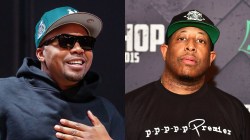
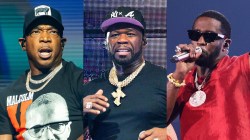



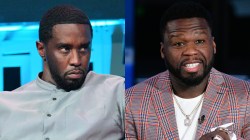
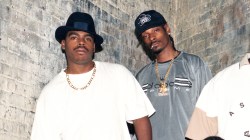

![50 Cent Shares Unseen Diddy Footage From Netflix Documentary: "[It] Shows You His Character"](https://hiphopdx.com/wp-content/uploads/2025/12/50-cent-diddy-documentary-trailer-unseen-footage.jpg?w=250)
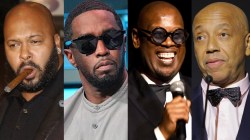
I must admit i like the album.. I can even forgive them for being j_ws.
What a busta you are. Haha.
I would like to buy an E
That’s what the world needs right now… more spewed racist bullshit. What a f’n piece of shit you are. The person who chose the font for this article has undoubtedly done more for humanity than you. I’m sure someone on your family tree is embarrassed by you, oh twisted, fragile branch. Go spit that shit on your no-doubt candidate’s website and leave the loving to the the progressives. Get bent.
Cracka ass crackas
Just kidding. They are incredible remarkable stupendous
Donald trump
Classic album!
Classic album. Dope MCs. Maybe too 5 Hip-Hop album ever. ALL hits. People don’t do it like that anymore. Real music.
“Dont be a fa-=g=got” hahaha Best Album title ever. It angered the Boss of CBS that was probably gay
Nice write up HHDX @ put sum respeck on my name ….Your not ‘BIRDMAN you’re a socially awkward man in your 40s who still lives with his parents and sleeps in a single bed . Think about it old man this is what your life has become a weirdo who spends his life race baiting online under different usernames. Rekkington,LOL ,Put sum respeck on my name ..ETC etc
Honestly if it wasnt for russel and chuck talking at first, most of the DX staff would throw a hissy fit and write about how they were culture vultures. Especially Trent Clark and that Michael dude.